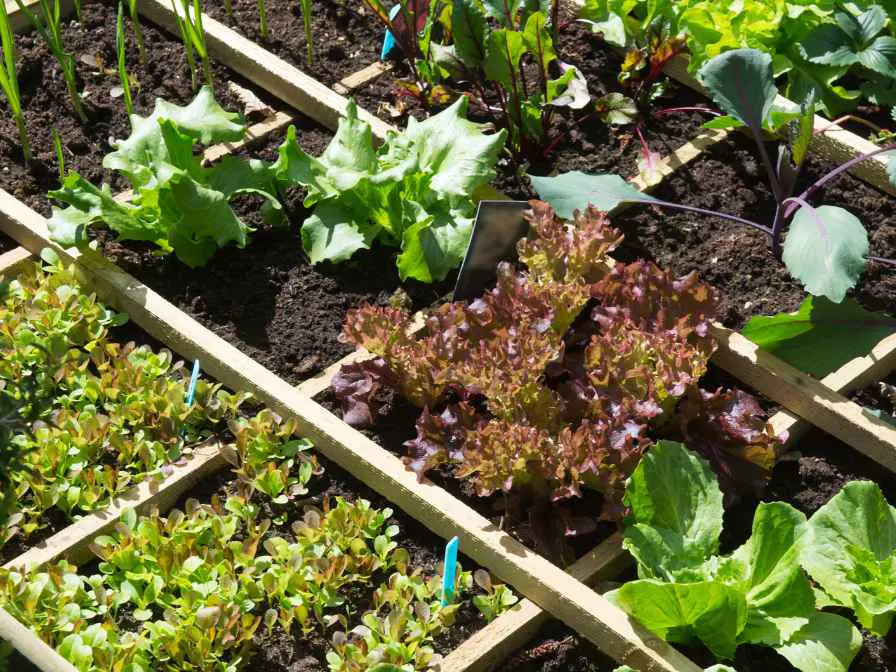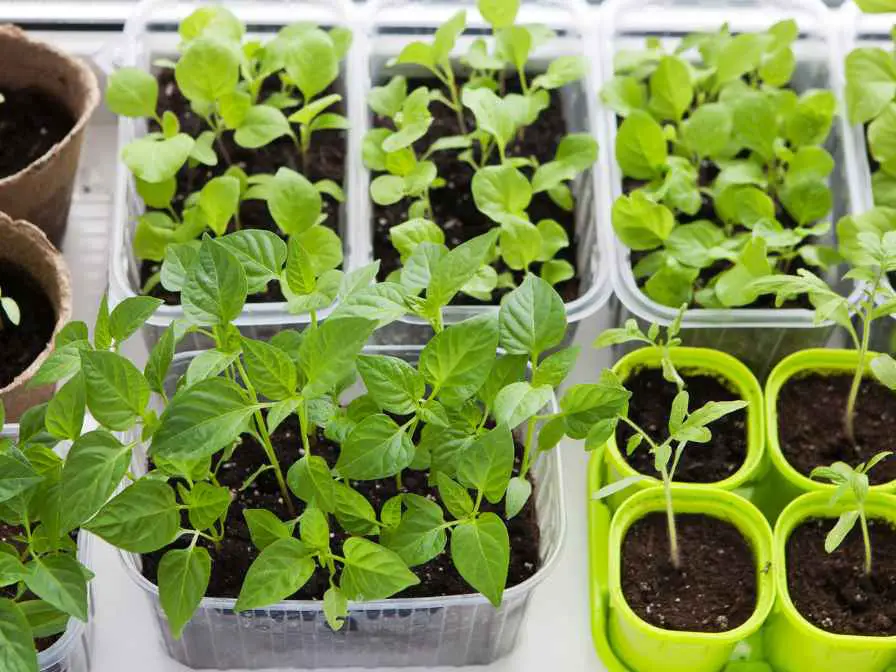Container gardening is much-practiced gardening. It is usually adopted by people that have a little less space for gardening. Most of these container gardening include vegetables. We are going to tell you about 15 vegetables that thrive in container gardens so that you can choose wisely.
Vegetables in a Container Garden

Container gardening is a popular way to grow vegetables in limited spaces such as patios, balconies, and small yards. Vegetables grown in containers offer several benefits, including easy maintenance, control over soil quality and nutrient content, and the ability to move plants around for optimal sun exposure.
When selecting vegetables for container gardening, consider the mature size of the plant and the size of the container. Plants that are too large for the container may not grow properly, and those that are too small may become overcrowded.
Some good vegetable choices for container gardening include tomatoes, peppers, lettuce, spinach, and herbs. Proper care and maintenance are crucial for success in container gardening. It is essential to ensure that the soil stays moist but not too wet and that the plants receive adequate sunlight and nutrients.
Regular watering, fertilizing, and pruning can help keep container vegetables healthy and productive throughout the growing season. You can choose any of the vegetables to plant in the containers to get the good supplies for the kitchen as well.
Benefits of Planting Vegetables in Containers
There are many benefits of planting vegetables in containers. Here are some of the important benefits of planting vegetables in containers;
Space-saving
Container gardening allows you to grow vegetables in limited spaces such as balconies, patios, and small yards. This is especially beneficial for urban gardeners who have limited space to work with. It also decorates the space.
Control Over Soil Quality and Nutrients
Container gardening allows you to control the quality and nutrient content of the soil. You can choose the type of soil and add fertilizers or compost as needed to ensure that your vegetables grow healthy and strong.
Mobility
Container gardening offers the advantage of mobility. You can easily move your containers around to find the best location for optimal sun exposure, and you can also move them indoors during extreme weather conditions.
Easy Maintenance
Container gardening is relatively easy to maintain. You can easily monitor your plants for pests, diseases, and nutrient deficiencies, and you can quickly make adjustments as needed. Also, you can move the containers according to need.
Fresh and Organic Produce
Growing vegetables in containers ensures that you have access to fresh and organic produce that is free from harmful chemicals and pesticides. You can also harvest your vegetables at the peak of their ripeness, ensuring that they are at their most flavorful and nutritious.
15 vegetables that Thrive in Container Gardens
There are many vegetables that can be easily grown in containers. Here we are going to discuss the 15 vegetables that thrive in container gardens so that you can choose according to your need, and available resources:
Tomatoes
Tomatoes are one of the most popular vegetables for container gardening due to their high yield and adaptability to different container sizes. Choose smaller varieties for smaller containers and provide support to keep them upright.
Peppers
Peppers come in a variety of shapes, sizes, and colors and thrive in containers with at least 12 inches of depth. They prefer full sun and require regular watering.
Lettuce
Lettuce is a cool-season crop that does well in containers. Choose a shallow container and plant the seeds close together for a dense harvest. Water frequently to prevent the soil from drying out.
Spinach
Spinach is another cool-season crop that can be grown in containers. Choose a container with at least 6 inches of depth and plant the seeds about an inch apart. Spinach prefers moist soil and partial shade.
Carrots
Carrots are root vegetables that can thrive in containers as long as the container is deep enough. Choose a container with at least 12 inches of depth and plant the seeds about 2 inches apart. Carrots require regular watering and well-draining soil.
Radishes
Radishes are easy to grow and do well in containers with at least 6 inches of depth. They prefer cooler temperatures and regular watering. Radishes are rapidly growing vegetables.
Cucumbers
Cucumbers are vining plants that do well in larger containers with at least 18 inches of depth. They prefer full sun and require support to keep the vines from becoming too heavy.
Zucchini
Zucchini is a summer squash that can grow well in larger containers with at least 24 inches of depth. They prefer full sun and regular watering.
Green Beans
Green beans can thrive in containers with at least 8 inches of depth. Choose a container that is at least 12 inches wide and provide support for the plants to climb.
Eggplant
Eggplants thrive in larger containers with at least 12 inches of depth. They prefer full sun and require regular watering.
Kale
Kale is a leafy green that can thrive in containers with at least 6 inches of depth. Choose a container with enough space for the plant to grow and provide regular watering.
Swiss chard
Swiss chard is another leafy green that can do well in containers with at least 6 inches of depth. They need partial shade and regular watering. It can be used in many dishes and forms.
Beets
Beets are root vegetables that can grow well in containers with at least 6 inches of depth. They prefer moist soil and regular watering. It has quite a lot of amount vitamin B9. You can store it for 7 to 10 days.
Scallions
Scallions are easy to grow and do well in containers with at least 6 inches of depth. They need regular watering and well-drained soil to grow well. These are also known as spring onions. It can last for 1 to 2 weeks in the refrigerator or fridge.
Herbs
Herbs such as basil, parsley, and thyme can thrive in smaller containers with at least 6 inches of depth. They need well-draining soil and regular watering. Herbs are an important part of the kitchen. Herbs have many medicinal benefits as well.
Taking Care of Vegetables in Container Gardens

Taking care of vegetables in the containers is quite easy because most of the time it is used for the same purpose of easy care. Here are some tips to consider while taking care of vegetables in container gardens:
Watering
Vegetables in container gardens require regular watering to ensure that the soil stays moist but not too wet. Water the plants deeply, so the water reaches the roots, and avoid getting water on the leaves, which can cause fungal diseases.
Fertilizing
Container-grown vegetables need regular fertilization to ensure that they receive the necessary nutrients for healthy growth. Use a balanced fertilizer every two weeks during the growing season. Avoid over-fertilization for proper growth.
Soil maintenance
Over time, the soil in container gardens can become compacted and depleted of nutrients. To prevent this, add fresh soil or compost to the container each growing season. Updating the soil will keep the plants healthy.
Pruning
Some vegetables, such as tomatoes and peppers, require regular pruning to encourage growth and prevent disease. Remove any dead or damaged leaves and branches to ensure that the plant directs its energy toward producing healthy fruit.
Pest control
Container gardens are not immune to pests, so it is essential to monitor the plants regularly for any signs of insect infestations. Use natural pest control methods such as neem oil or insecticidal soap to keep the pests at bay.
Sun exposure
Most vegetables require full sun to thrive, so ensure that your container garden is in a location that receives at least six hours of direct sunlight each day. The process of photosynthesis keeps the plants green and helps in growth.
Harvesting
Regular harvesting of vegetables is essential to ensure that the plants continue to produce new fruit. Harvest the vegetables when they are ripe and at their peak flavor and nutrition. Store them in a cool and dry place for further usage.
In a nutshell, vegetables can be easily grown in containers. You can choose any vegetable according to your available resources. Just take minimal care and you are good to go.
FAQs
What vegetables work well in container gardens?
There are many vegetables that you can choose for container gardening. You need to select the vegetables like beets, eggplants, tomatoes, and others for container gardening. Make sure the vegetable you have chosen is aligned with the climate and soil of the area.
How deep do containers need to be for vegetables?
The depth range for the vegetables varies with root development and growth. You need 6 to 9 inches depth for vegetables like lettuce, radishes, and others. For kale, beets, carrots, and others you need a 12 to 18 inches deep container.
What soil is best for container gardening?
Potting mix is best for the vegetables to plant in the containers. Potting soil is easily available at every garden store.

